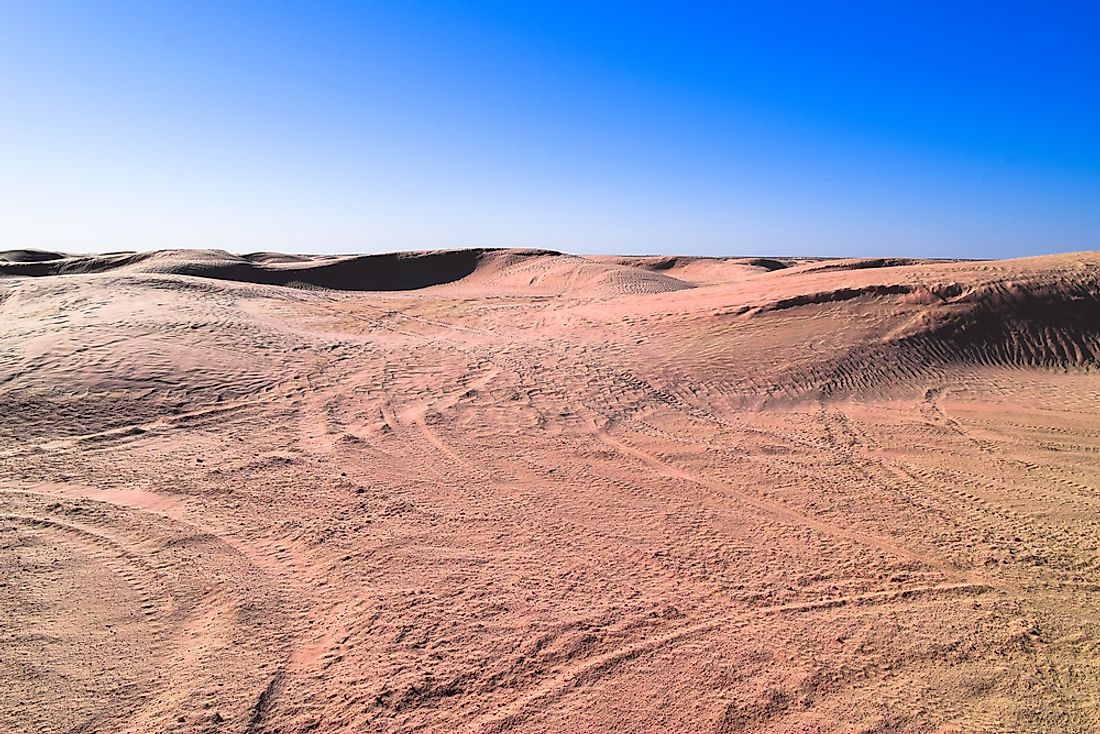Important Facts About the Tibesti Mountains

Location of the Tibesti Mountains
The Tibesti Mountains are a mountain range that extends from northern Chad to southern Libya, in the central part of the Sahara Desert. Chad’s capital city, N’djamena, is located approximately 1,000 km the south of the Tibesti Mountains. The range runs roughly midway between the Mediterranean Sea in the north and the Lake Chad in the south.
Description of the Mountain Range
Volcanic Features
The Tibesti Mountains cover a total area of 100,000 square km and extends across a length of 380 km. A section of the range is of volcanic origin, and five shield volcanoes with massive craters at the summit are present in this section of the range. Large plateaus formed of lava, mud pools, hot springs, and fumaroles also characterize the landscape of the volcanic portion of the range.
Highest Peaks
The average elevation of the Tibesti Mountains is 6,600 ft, and about 60% of range's area has an elevation of more than 4,900 ft. The highest peak of the Tibesti Mountains is the 11,302 ft tall Emi Koussi, which is also the tallest mountain in Chad and the entire Sahara. Libya’s highest point, Bikku Bitti, is also located in the Tibesti Mountains.
Hydrological Features
Five rivers flow from the northern part of the mountain range towards Libya, and the southern part of the range lies in the watershed of Lake Chad. All rivers originating from the range run only for a short distance prior to disappearing underground or evaporating due to the extreme desert heat. The water flow in these rivers is highly variable since the source of water in these rivers (storms above the mountains) is highly unpredictable. In addition to rivers, small, temporary or permanent bodies of water like the guelta wetlands, sequential pools in enneri beds, and hot springs, exist in the region.
Climate of the Tibesti Mountains
The mountain region experiences conditions that are less dry than the surrounding desert. Storms often bring heavy downpour but are highly unpredictable in nature and often years go by without any major storms. The average maximum temperature varies between 30 °C to 20 °C depending on elevation.
Flora and Fauna of the Tibesti Mountains
The flora of the region is described as Saharomontane and exhibits significant levels of endemism. Rainfall, proximity to water bodies, and altitude determine the type of vegetation cover in different parts of the mountain range. Many mammalian species live in the Tibet Mountains like the addax, gazelles, Barbary sheep, several species of rodents, African wildcat, Sudan cheetah, and striped hyena. Reptilian, amphibian, and avian diversity are also significant in the mountain habitat.
People of the Tibesti Mountains
The Toubou people are the indigenous inhabitants of the Tibesti Mountains. The mountain region had a population of about 8,000 people in the 1980s. Most of the main settlements in the area, like Aozou, Zouar, and Bardaï, are located along the oases in the wadis.











